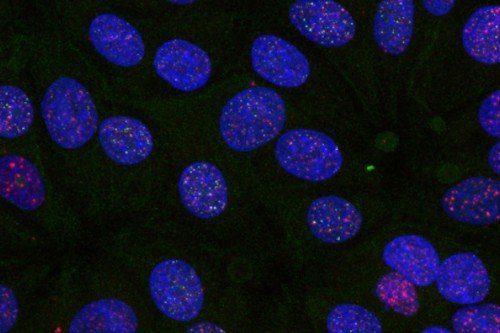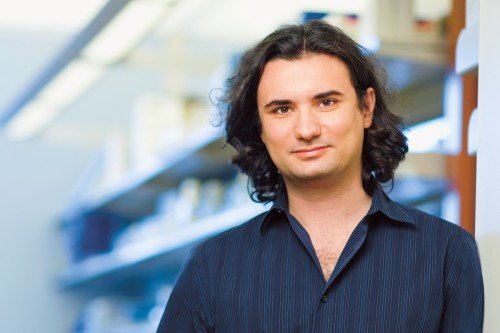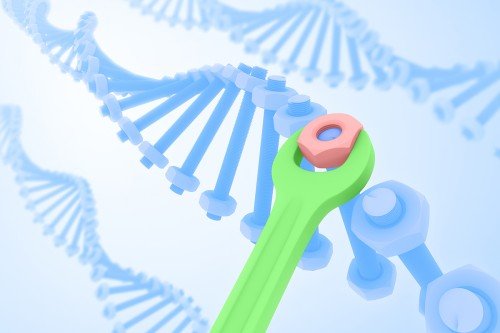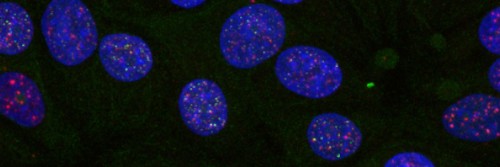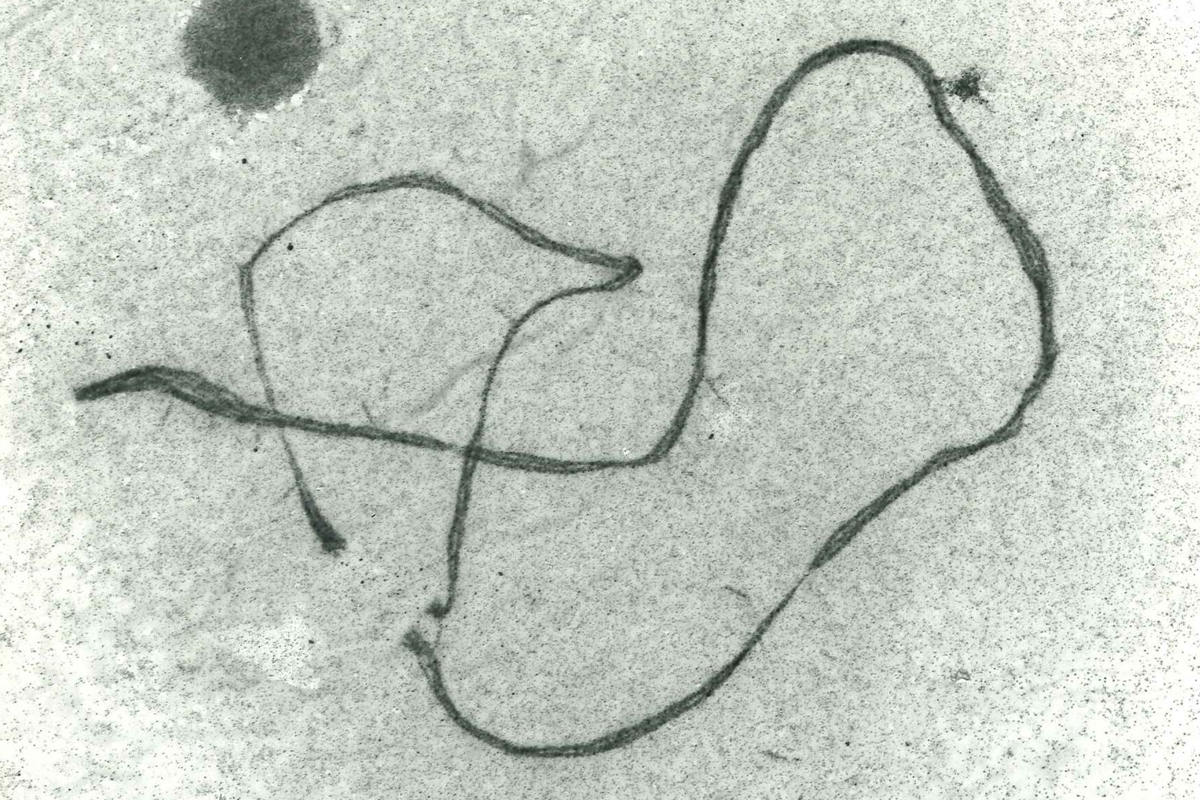
An X and a Y chromosome from a cell undergoing meiosis, an event that leads to the formation of sperm or egg cells, imaged by electron microscopy. One end of each chromosome is joined at the site where DNA is exchanged between the chromosomes by homologous recombination. Cells also use this process to repair some types of DNA damage. (Courtesy of the Maria Jasin lab.)
When DNA is damaged during replication by genetic losses or gains or rearrangements of the chromosomes, the mutations that result can accumulate and lead to disease, including cancer. Our investigators use many approaches — including cell regulation, structural biology, and biochemistry — to study DNA repair processes and how genomic integrity can be maintained.

